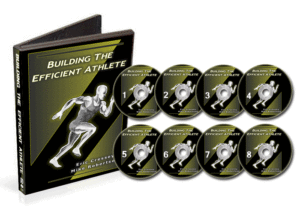The Most Important Thing for Rookie Trainers
Earlier this week, we had a gentleman stop by our facility to observe Tony, Brian, and I in action. He is new to the industry – less than one year under his belt, in fact – but has a solid roster of clients of all ages and ability levels. I give the guy a ton of credit for coming all the way to MA from across the country to get better at what he does; I wish more people were passionate enough about helping their clients to do so.
Anyway, while he had quite a few questions, he asked me flat-out what I think the most important thing to do is for an up-and-coming personal trainer or strength and conditioning coach. My answer was simple: learn functional anatomy. Very simply, everything you do with a client or athlete comes down to understanding how their body is built. And, if you know how the body is built (statically), you can start to understand how it functions (or malfunctions) dynamically. This is a skip that, in my opinion, far too many trainers and coaches overlook. It may be boring to memorize all this stuff, but it’s incredibly important.
I mean, honestly, have you ever met a mechanic who didn’t know what a radiator did or where it was located? A car’s anatomy is probably just as expansive as the human body, but you don’t see mechanics fixing car troubles before they learn where all the parts are – or what they’re supposed to do. Sadly, I think that if I asked every trainer on the planet what a coracobrachialis was, only half could even tell me where it’s located, and even fewer would be able to relate its functions.
At risk of sounding overconfident, this is one reason why I’m so proud of our Building the Efficient Athlete DVD Set. In my experience, there isn’t a single product out there that delves into functional anatomy in as detailed a fashion as Mike Robertson and I do, and there certainly isn’t anything that relates that anatomy to what you see when your clients and athletes perform exercises, encounter injuries, or struggle to grasp some new technique.
Here’s a little sample of what you can find on the first two (of eight) DVDs in the set:
DVD #1: Introduction
- Why learn functional anatomy?
- What resources do the BEST use to improve their skills?
- What resources will absolutely make you regress as a trainer, coach or athlete, and how do you avoid them?
- How will improved posture not only keep you healthy, but also improve your performance?
- How can you use the Law of Repetitive Motion to rapidly elicit changes in posture?
DVD #2: Lower Body, Core and Upper Body Functional Anatomy
- Are the hip flexors tight? If so, which one(s)? We show you specific tests to figure out exactly which areas are short or stiff.
- Why are well functioning glutes an absolute necessity if optimal performance is your goal? How can they help us to avoid hamstring pulls, groin strains, and lower back pain!
- How is it that we’ve misunderstood the role of various core muscles for so long? And, how can we modify our training to “undo” the damage that’s been done?
- How can the pectoralis major and subscapularis be both antagonists and synergists, and what are the implications on health and performance?
- Have we been missing the boat on how we view rhomboids?
- Why doesn’t anyone think about pectoralis minor?
Again, this is just the tip of the iceberg. There is a whole lot more on the other six DVDs, including live static and dynamic assessments, programming strategies, and loads of troubleshooting for common resistance training exercises.
For more information, check out Building the Efficient Athlete.



